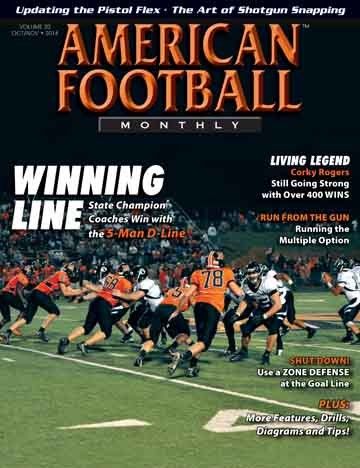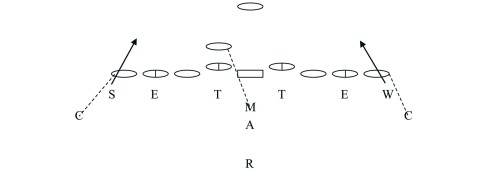AMERICAN FOOTBALL MONTHLY THE #1 RESOURCE FOR FOOTBALL COACHES
Article CategoriesAFM Magazine
|
Drills Report: Punt Safe: Defend and Returnby: Mike ToopHead Coach United States Merchant Marine Academy © More from this issue In certain situations, whether due to field position or when leading in the latter stages of a game, teams will leave their defense on the field to protect against punt fakes and employ a ‘Punt Safe’ scheme. We employ a scheme that first guards against the fake but at the same time will look to block the punt, and if the ball is punted, use a set wall return (Diagram 1).
|
|
|||||||
| HOME |
MAGAZINE |
SUBSCRIBE | ONLINE COLUMNISTS | COACHING VIDEOS |
Copyright 2025, AmericanFootballMonthly.com
All Rights Reserved






